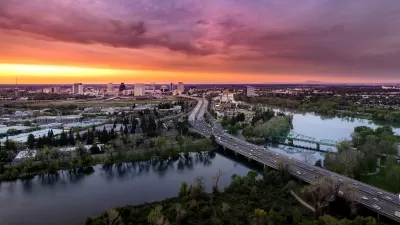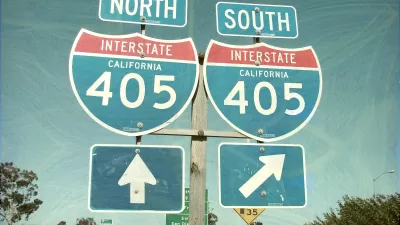Some local advocates and officials had hoped that tolls and transit could salve the congestion on I-66. Now it will be tolls, transit, and an extra lane.
Chris Slatt reports on the latest development in the saga of I-66 inside the Beltway in Virginia.
Virginia Governor McAuliffe announced today that I-66 will become one lane wider eastbound inside the Beltway, from the Dulles Toll Road to Ballston. That changes previous plans to hold off on widening, to give transit and tolls a chance to ease congestion on their own.
According to Slatt, this compromise was only the most recent, as Republican state lawmakers continued to push for the widening of the freeway. In return for the widening of I-66, reports Slatt, "Republican leaders will drop their opposition to the tolls and transit components."
Now, in addition to the widening, the project's structure includes, "an agreement to spend the majority of toll revenue on transit projects in the corridor, [and] eliminating exemptions for hybrid cars, Dulles Airport traffic, and law-enforcement cars so that all single-driver cars had to pay the toll…"
Slatt goes on to describe more of the political fallout from the decision to widen the freeway. Arlington, Virginia, especially has opposed the widening. Slatt also identifies some reason for advocates of smart growth to be hopeful that this won't just be another widening project. "That said," writes Slatt, "serious concerns remain."
FULL STORY: I-66 widening will happen soon whether it makes sense or not

Study: Maui’s Plan to Convert Vacation Rentals to Long-Term Housing Could Cause Nearly $1 Billion Economic Loss
The plan would reduce visitor accommodation by 25,% resulting in 1,900 jobs lost.

North Texas Transit Leaders Tout Benefits of TOD for Growing Region
At a summit focused on transit-oriented development, policymakers discussed how North Texas’ expanded light rail system can serve as a tool for economic growth.

Why Should We Subsidize Public Transportation?
Many public transit agencies face financial stress due to rising costs, declining fare revenue, and declining subsidies. Transit advocates must provide a strong business case for increasing public transit funding.

How to Make US Trains Faster
Changes to boarding platforms and a switch to electric trains could improve U.S. passenger rail service without the added cost of high-speed rail.

Columbia’s Revitalized ‘Loop’ Is a Hub for Local Entrepreneurs
A focus on small businesses is helping a commercial corridor in Columbia, Missouri thrive.

Invasive Insect Threatens Minnesota’s Ash Forests
The Emerald Ash Borer is a rapidly spreading invasive pest threatening Minnesota’s ash trees, and homeowners are encouraged to plant diverse replacement species, avoid moving ash firewood, and monitor for signs of infestation.
Urban Design for Planners 1: Software Tools
This six-course series explores essential urban design concepts using open source software and equips planners with the tools they need to participate fully in the urban design process.
Planning for Universal Design
Learn the tools for implementing Universal Design in planning regulations.
Ascent Environmental
Borough of Carlisle
Institute for Housing and Urban Development Studies (IHS)
City of Grandview
Harvard GSD Executive Education
Toledo-Lucas County Plan Commissions
Salt Lake City
NYU Wagner Graduate School of Public Service




























